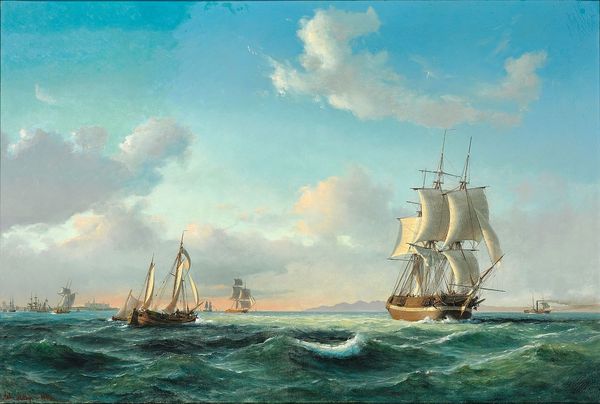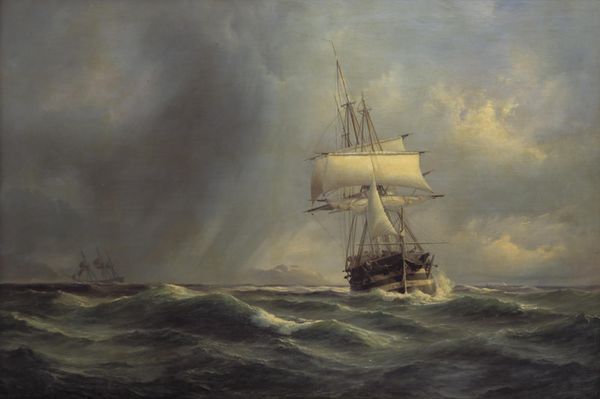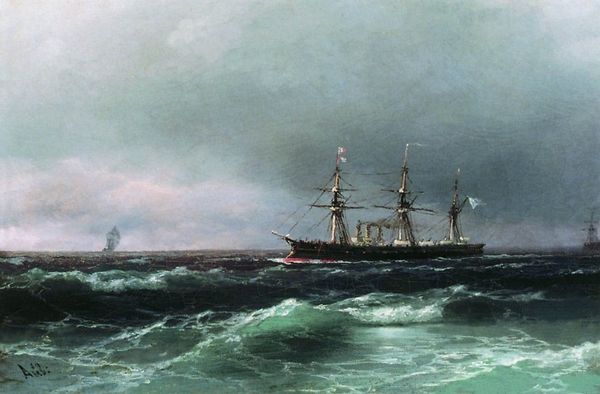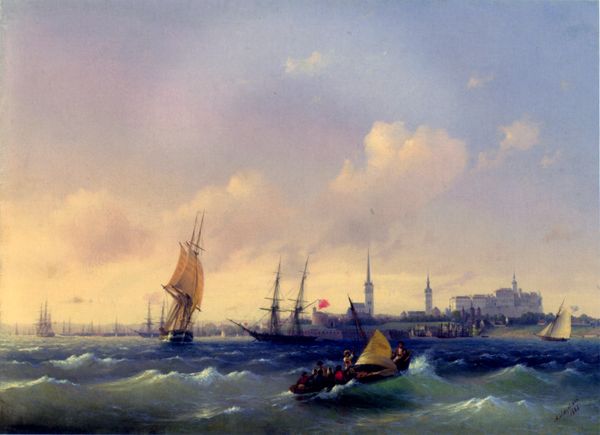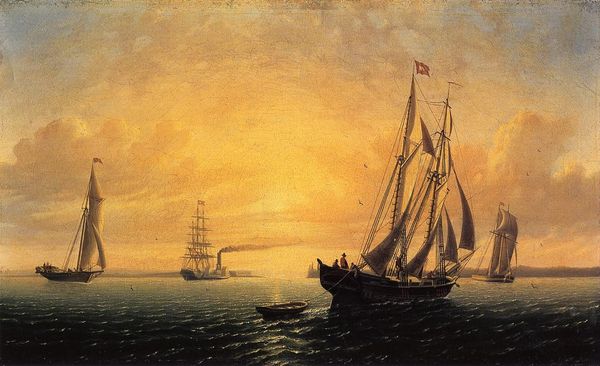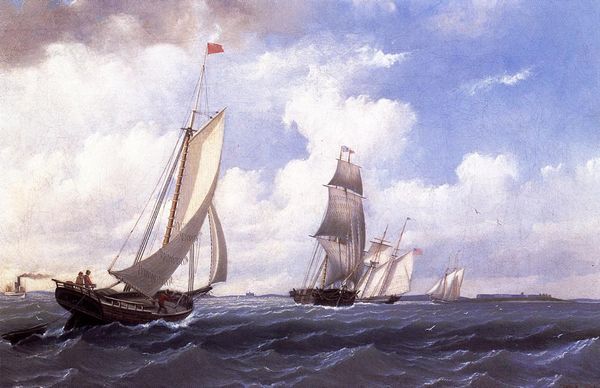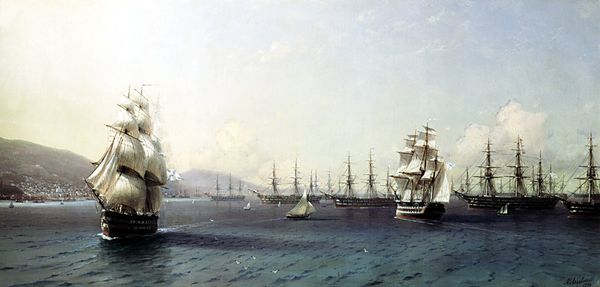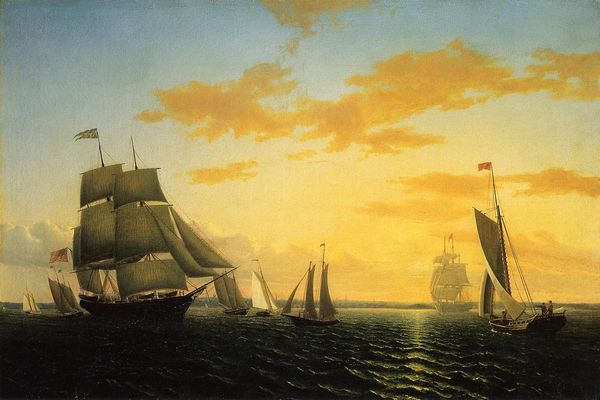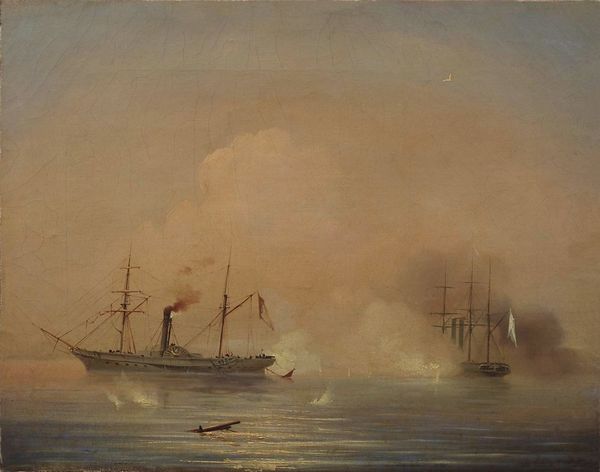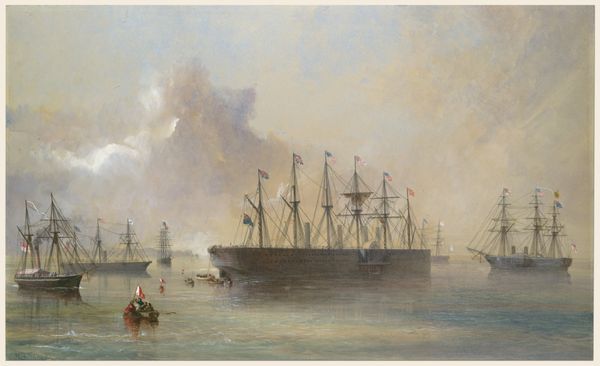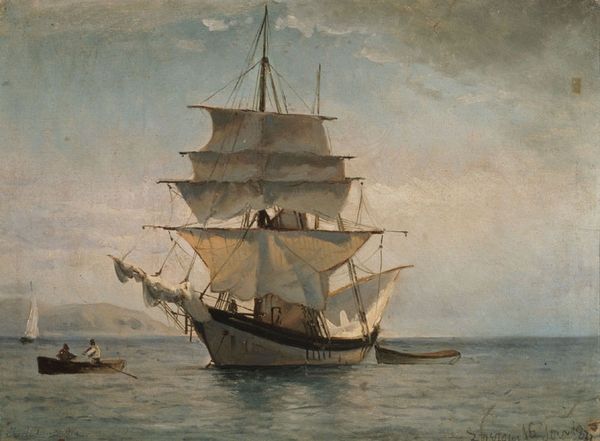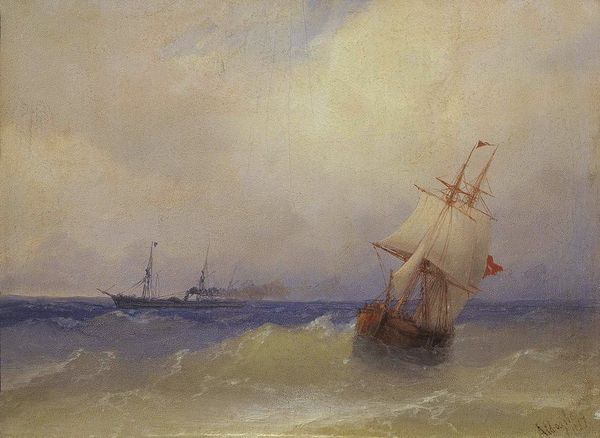
Copyright: Public domain
Curator: Look at this stunning seascape by Ivan Konstantinovich Aivazovsky, painted in 1852. It's titled "Crimea." Editor: Immediately, I'm struck by the light. The sky feels heavy with a preternatural calm, reflected somewhat in the water, yet contrasted with a churn. What does this painting mean in the context of Crimea itself, beyond a lovely depiction? Curator: The Crimean peninsula has a long and fraught history of cultural exchange and conflict. Situated as it is between Europe and Asia, control over Crimea has shifted many times, representing a flashpoint for ethnic and political tensions and struggles for power throughout its history, and even leading up to the present day. In this painting, made of oil paint, Aivazovsky offers his idealized vision of the peninsula during a relatively stable, perhaps deceptively serene period in that history. We must recognize that Aivazovsky, though celebrated, often presented a romanticized, arguably propagandistic view of Russian naval power. Editor: And that propaganda comes directly from the choice of materials and execution. Consider the way he depicts the ship. Notice the detail given to its rigging and sails. These are testaments to industrial craftsmanship and skill, objects of great value and, therefore, power in a burgeoning capitalist system. What do these vessels really signify for the populations whose lands border those churning waters? The labor invested is apparent; this is very tangible in how carefully, painstakingly the oil paints are applied. Curator: Indeed. Aivazovsky’s skill allows him to manipulate light and texture to evoke particular emotional responses, whether of awe or perhaps something more ambivalent considering Russia’s geopolitical ambitions at the time and since. Even seemingly simple landscape painting contains the opportunity to assert cultural and political hegemony. Editor: It all returns to material, process and context: both the immediate social contexts surrounding its creation and how those relate to what we, as modern viewers, experience now. This intersection shows how seemingly timeless scenes bear traces of conflict and coercion. Curator: It gives us cause to question even seemingly benign representations of landscapes or places—urging viewers to reflect on what perspectives are highlighted or suppressed, and whose narratives get centered or erased through visual imagery. Editor: Absolutely. Thinking about "Crimea" in this manner underscores how art is invariably bound up in the power structures, resources, and cultural dialogues of its era, reflecting both overt messaging and latent biases that persist long after the brushstrokes have dried.
Comments
No comments
Be the first to comment and join the conversation on the ultimate creative platform.

